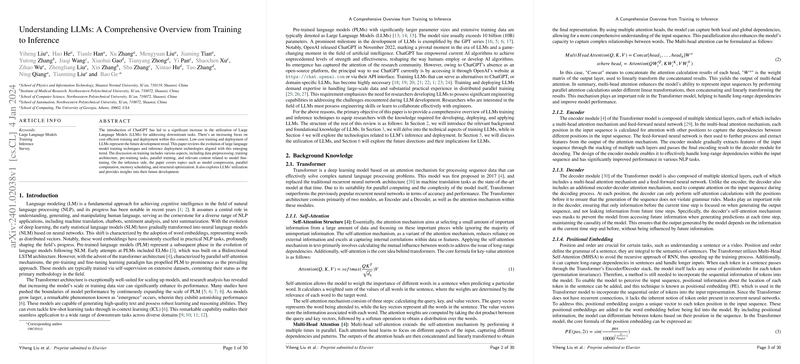Understanding LLMs
Introduction
LLMs have become a significant force in NLP, showcasing impressive capabilities in understanding, generating, and manipulating human language. The transition from early statistical models to current neural network-based models has allowed for exceptional advancements. Pre-trained LLMs (PLMs), particularly those based on the transformer architecture with parallel self-attention mechanisms, represent the cutting edge in LLMing. These PLMs are usually pre-trained on vast datasets, which establishes them as the go-to methodology in NLP.
Evolution of LLMs
A milestone in LLM development emerged with the advent of the GPT series introduced by OpenAI. The release of ChatGPT highlighted the immense potential of these models. However, ChatGPT is not open-source, which limits direct modification or examination. Consequently, there's a pressing need for developing alternative LLMs, including domain-specific ones, which can provide similar strengths. Training these behemoths requires not only large-scale data processing capabilities but also significant engineering expertise.
The Training Process
Training LLMs encompasses several steps: collection and processing of data, model pre-training, and subsequent fine-tuning. Data sources vary widely, from web text and books to professionally curated corpora. Data preprocessing is a vital step that significantly influences model performance. It includes quality filtering, deduplication, privacy scrubbing, and removing toxic or biased text.
LLMs primarily use the Transformer architecture, whether it is in an Encoder-decoder, Decoder-only, or Prefix Decoder configuration. The training then involves pre-training tasks, notably LLMing, where the model is tasked with predicting subsequent words in a sequence.
Inference and Deployment Techniques
Once trained, deploying LLMs for inference use efficiently is another challenge. Techniques such as model compression, parallel computation, memory scheduling, and structural optimization play crucial roles. These methods aim to reduce model size, enhance computational speed, and manage memory usage more effectively without compromising performance. For instance, model compression methods like knowledge distillation and pruning reduce the number of parameters, making models lighter and faster.
Utilization and Future Directions
LLMs have potential applications in virtually any domain. The use of LLMs typically involves designing effective prompts, which allow the model to perform a spectrum of tasks, from simple question-answering to more complex predictions. The future development of LLMs is multifaceted. It involves not just scaling up the model but also extending capabilities to multimodal data and exploring new architectures.
Conclusion
The development of LLMs is an active area of research, with enormous implications for various applications in NLP and AI. The need for collaboration between researchers and engineers is more pivotal than ever, as is the need for ethical considerations in deployment. As LLMs continue to grow in both complexity and capability, their impact on technology and society will undoubtedly expand in tandem. The journey of understanding and optimizing these models is ongoing, promising an exciting frontier for advances in computational linguistics and artificial intelligence.
